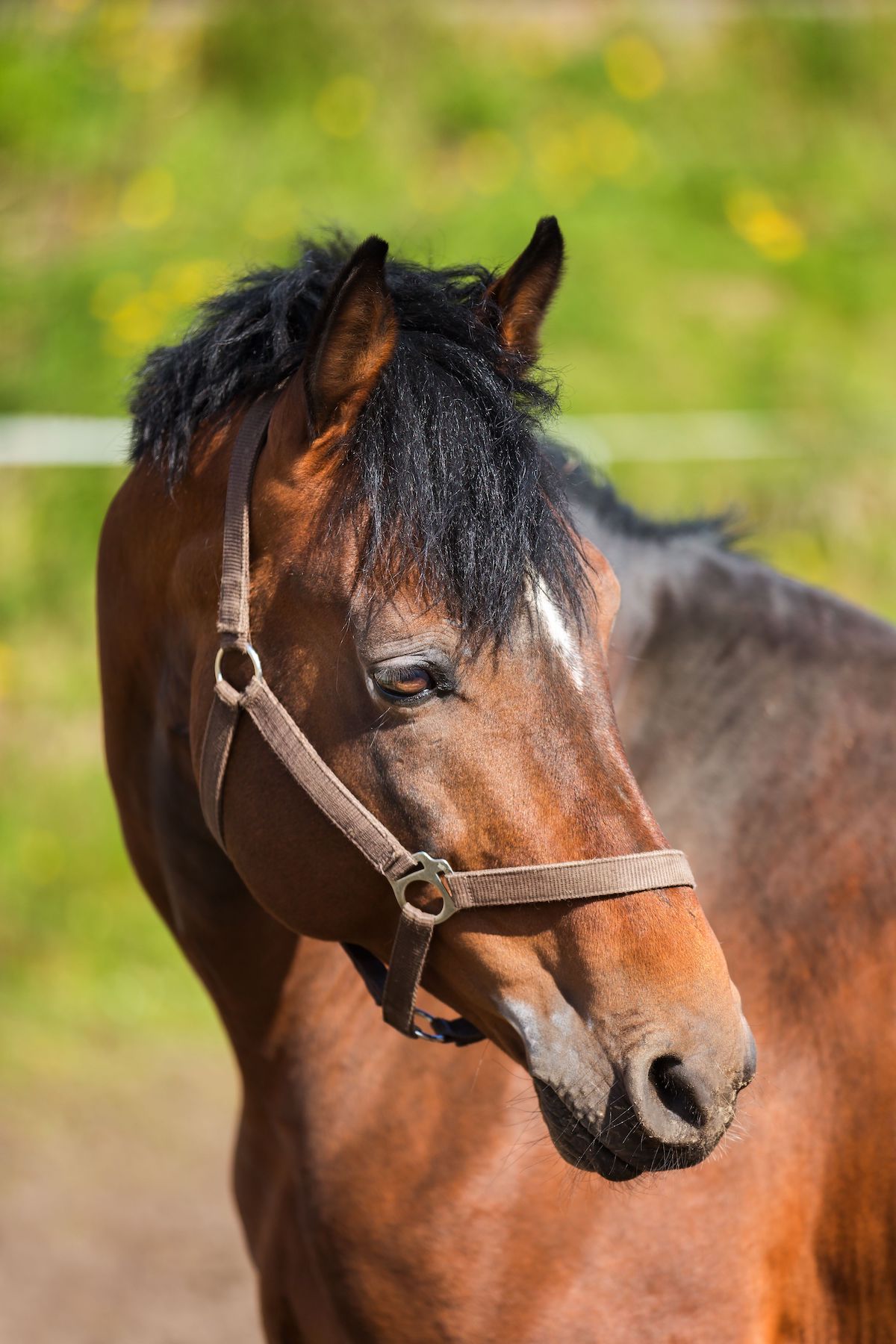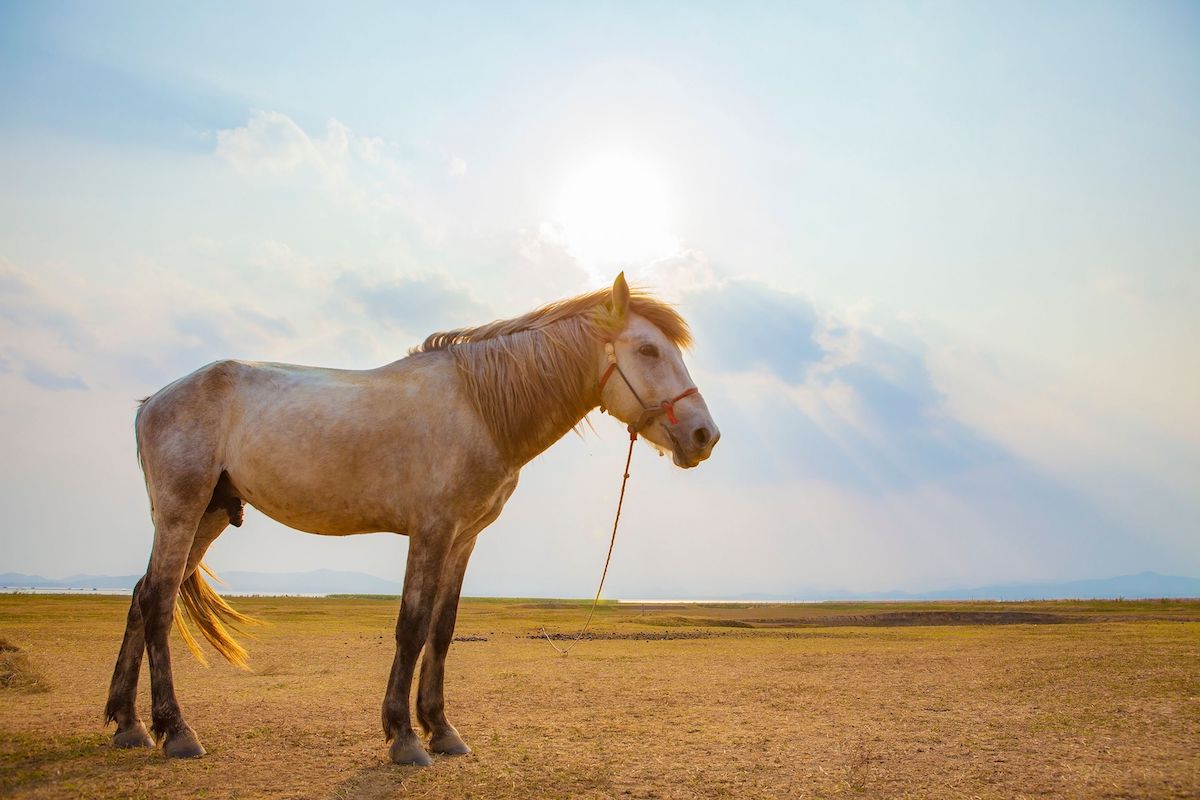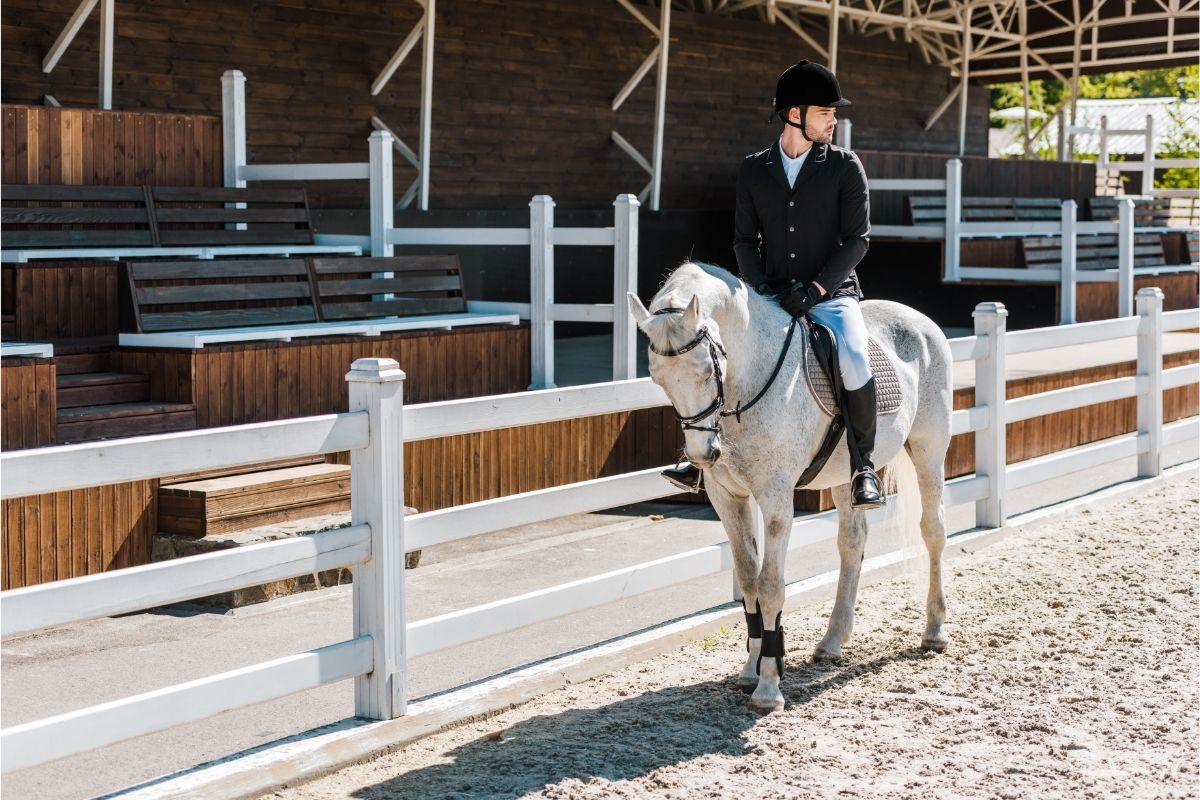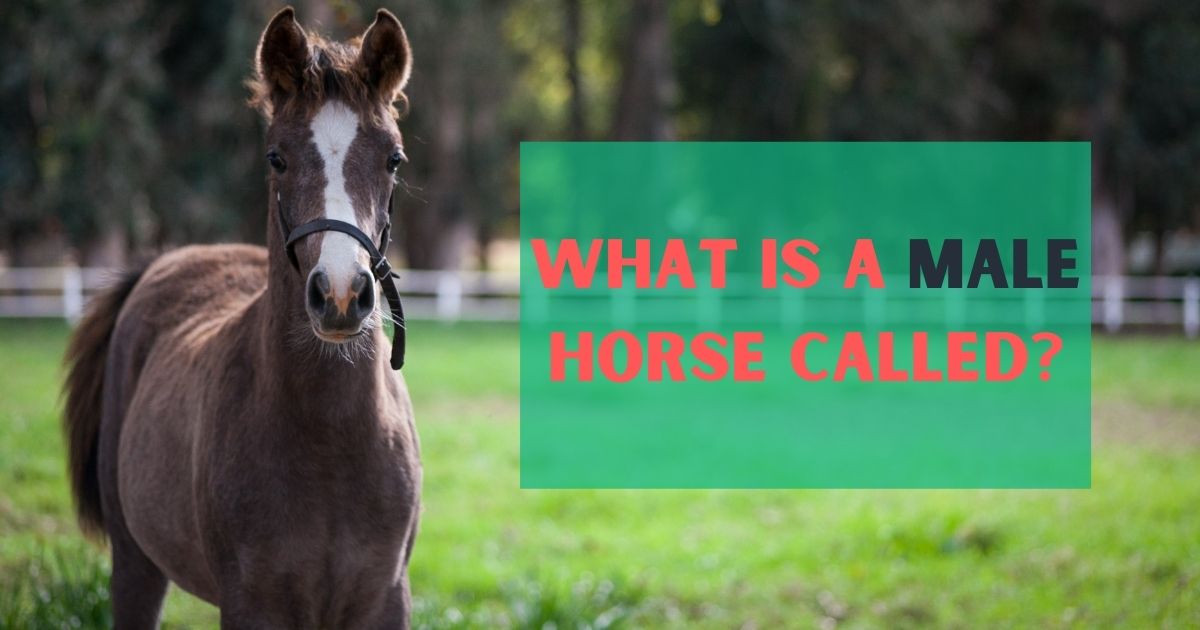Where do Horses Come From?
Imagine being at a barn with your horse and not knowing what to call it. For example, what is a male horse called? There are so many names for horses that you can’t help but feel lost!
The list goes on from “mares” all the way down into minor details like color schemes or cuts of hair – there’s no end in sight when it comes to equestrian terminology. But don’t worry; this piece will help you get acquainted with these terms.
Before delving into terminologies associated with the male horse, let’s look at where the horse came from:
- Its scientific name is Equus caballus.
- The horse is a hoofed herbivorous mammal that belongs to the family Equidae that has only one species, Equus caballus.
- The multiple varieties of the species are what are referred to as breeds.
History suggests that the first intensive domestication of horses was in Central Asia. Here, they had small, stocky, and lightweight horses. After some time, two main groups of horses emerged, including the southerly Arab-Barb types and the northerly types, referred to as the cold-blooded types.
There is no agreement as to when, where, and how these horses appeared. For instance, it is believed that light horses like the Arabian were developed in Arabia by the 7th century CE. On the other hand, the thoroughbred is an English breed with a long history that dates back to the 3rd century.
There are also heavy breeds that were mainly used for carrying heavy loads and employed for farm labor. It is believed that these horses descended from the ancient warhorses of the Middle Ages. Examples include the French Percheron, English Shire, Clydesdale and Suffolk, and the Belgian horse.
In the past, horses were mostly used as graft animals before the arrival of mechanized vehicles. In this regard, riding on the horse’s back was the primary mode of transport.
Historical records reveal that the wild horse was possibly hunted for food in ancient times. According to studies, horse domestication began around 6000 years ago. It is believed that the Indo-European tribe was the first to use the horse. Moreover, scientists argue that the horse acquired its present form thanks to influences like food, climate, and humans.
The human-horse relationship is special. Humans consider the horse as a friend and partner. For instance, they used horses for plowing fields, hauling goods, and conveying passengers. Additionally, horses were used to track cattle and also ferry combatants into the battlefield. The horse also offered humans recreation activities such as riding, carousels, and tournaments.
French Zoologist Georges-Louis Leclerc argued that the horse is the “proudest conquest of man.” Its place has always been by its master, and many ancient human cultures were centered on horse possession as a wealth indicator.
The horse also has a unique place in the art realm. For instance, the horse has inspired many artists in different eras and different parts of the world. For example, it was present in the Stone Age drawings, the Chinese Tang dynasty tomb sculptures, and sketches by Leonardo da Vinci.

Colt vs. Foal
What is a colt? Colt is the term used to refer to an uncastrated male horse under four years old. Moreover, you can also describe a colt as a foal when he is under one year old.
Typically, a colt becomes sexually mature by 12-14 months. Nevertheless, most people argue that age is too young to be used for breeding. In this regard, many breeders usually wait until the colt is at least three years old.
Stallion vs. Gelding
A stallion is a male horse that is aged more than four years and has not been castrated. As a result, you can use a stallion for breeding. However, they are usually aggressive in nature, making them difficult to handle. For this reason, stallions are mainly kept for breeding.
You need not worry about the stallion being aggressive towards you because they are primarily aggressive towards other horses. Physically, the stallion has a cresty neck, and his body is more muscular than mares and geldings.
What is a gelding? Gelding is the term used to refer to a castrated male horse. As a result, a gelding cannot be used for breeding purposes. Studies have shown that geldings are calmer and easier to work with compared to stallions.
The gelding itself is a surgical procedure in which the horse’s reproduction is made impracticable through neutering. You can castrate your horse from as early as 6-12 months. As long as your horse’s testicles have dropped, they can be safely gelded. You can also geld your male horse well into his teens (three years old). In fact, experts advise that you should geld your horse before its first birthday.
This is because castrating your horse at an early age eliminates any undesirable aggression or development of any unwanted habits. Moreover, gelding the horse when it is still young involves fewer complications, and they tend to recover quicker.
If you are not planning to use your horse for breeding, it would be best to geld them at a young age. On the other hand, there are some male horses whose testicles never descend or they were improperly castrated. Even though this is rare, such horses are referred to as rigs.
So, is it necessary to geld your horse?
There is a raging debate in the equine community on whether or not horse owners should geld their horses. Well, there is a general agreement that if you don’t intend to breed your male horses, it will help to geld them. This is because gelding horse makes training and management more effortless.
As mentioned earlier, stallions are usually more aggressive and unpredictable. As a result, it is more challenging to ride, train and manage them. Apart from that, you will have to house your stallion away from other horses to avoid unplanned breeding and other aggressive behaviors.
In this regard, it would help to geld your horses as it makes them effortless to manage. As a matter of fact, most of the horses used for riding are geldings because of their encouraging traits.
Stud vs. a Shire
Stud is the name given to an adult male horse that is used for breeding purposes. Studs are usually precious and in high demand as other horse owners seek them for their genetics and bloodline. Moreover, a male horse used for breeding is referred to as a stud, even if it has produced no offspring.
On the other hand, a sire, often confused with a stud, is an adult male horse that has been used for breeding and has produced offspring. Therefore, the terms stud and sire are not differentiated by the number of times you have used the horse for breeding but rather the result of the breeding.

Interesting Facts About Male Horses
Here are some interesting facts about male horses you should know:
- The most famous horses used for riding are the geldings.
- During the Middle Ages, the finely trained prominent stallions that the knights rode into battle were called destiers.
- Colts have been found to be shy when they are younger. However, they mature faster than females physically.
- Stallions are not allowed in junior exhibitor or ladies’ classes for many horse breeds because of their unpredictable nature.
How to Tell if Your Horse is Male
Identifying a male horse is a straightforward affair. First, take a quick glance at the horse’s underside to check the genitals. However, it would help if you still used the correct terminology for the male horse. You can do this by examining the horse’s teeth.
A horse with a complete set of permanent teeth is likely to be more than five years. On the other hand, horses under the age of four don’t have their full set of teeth. So this is how you would identify a colt horse. Read our article and find out cool horse names for your horse.
How to Ride a Stallion
Many equestrians find it more interesting to ride a stallion. Fortunately, although the stallion has aggressive tendencies, it can be trained to make it rideable. This is true because warriors used to ride stallions into battle in the days of old.
Nevertheless, it would help to remember that even the best-behaved stallion is under the influence of hormones and can quickly become unpredictable. As a result, to ride a stallion, you must be extremely patient and experienced to manage it properly.
On the other hand, if you are a newbie in the world of horses, you’d better stay away from the stallion as you could easily injure yourself, the stallion, or others.
How to Ride a Gelding
Geldings are usually used strictly for riding purposes. They have less testosterone because of castration, making them more submissive and even-tempered. Moreover, when you compare them to female horses, geldings have a more stable temperament and mood.
As a result, geldings are the best option for new horse owners or beginner riders. However, not all geldings exhibit the same behavior. For instance, the age at which the horse was gelded impacts its future behavior and disposition.
In this sense, a new rider should go for a gelding that was neutered early in life because they are least likely to exhibit aggressive behavior. Nevertheless, it is advisable to take your time to get to know the horse you are riding regardless of its gender and reproductive abilities.
For example, it would not be wise to assume that a horse will be calm and best-behaved simply because it was gelded. Similarly, it would be wrong to assume that all stallions are aggressive and temperamental.

The Final Neigh
If you have read this detailed piece blow by blow, you will no longer struggle with what to call your male horses. Whether you are an experienced horse rider or just getting started, you are now aware of the kind of horse that would work best for you.
For instance, if you are a newbie, consider going for a gelding as it would be easier for you to handle. On the other hand, more experienced horse owners and riders are better equipped to handle stallions.
You now know the difference between stud, sire, gelding, stallion, and colt. This knowledge will make it easy for you to communicate effectively and progress your equine journey making it more interesting. So, what’s the term that has been confusing you most?

